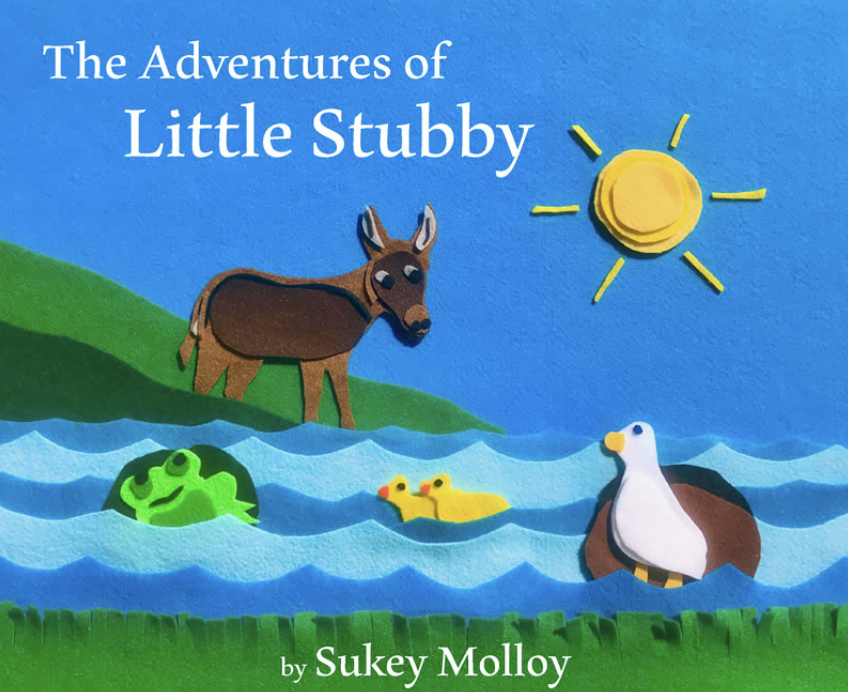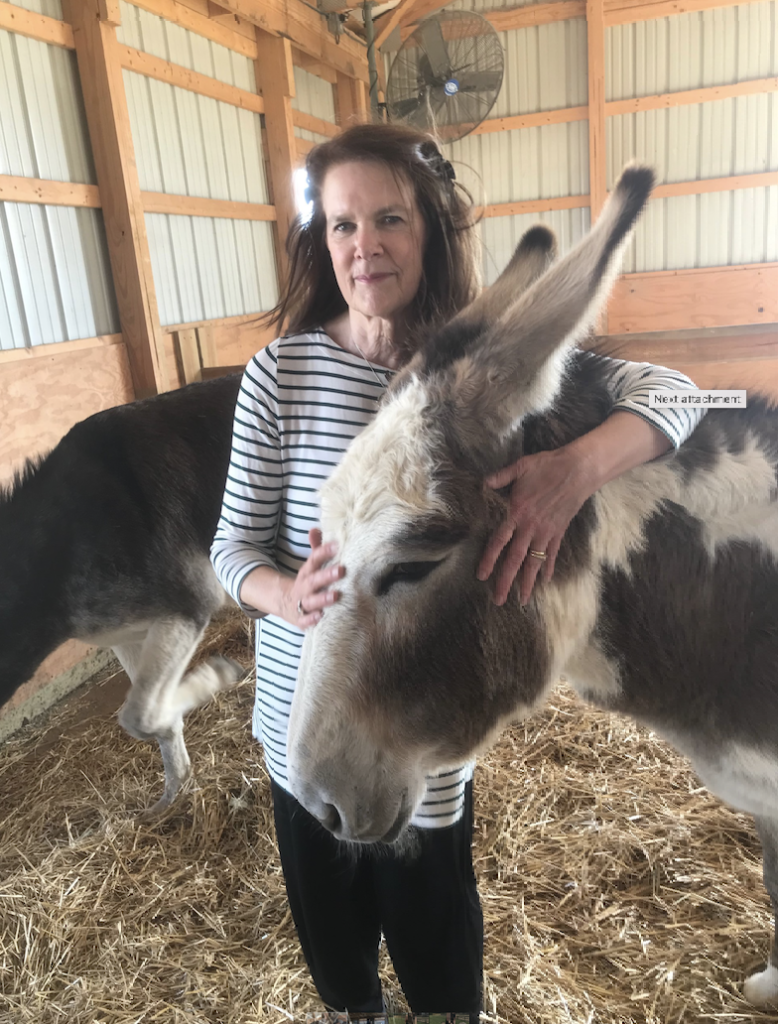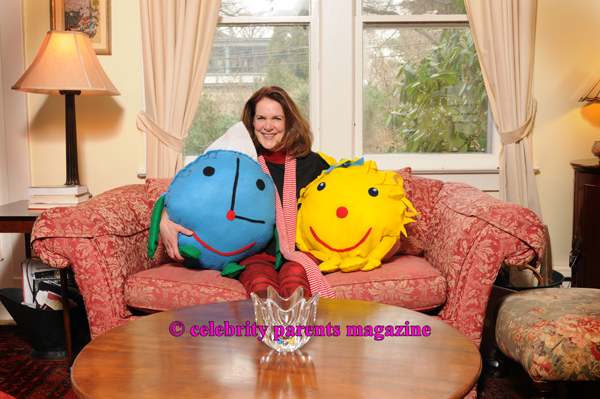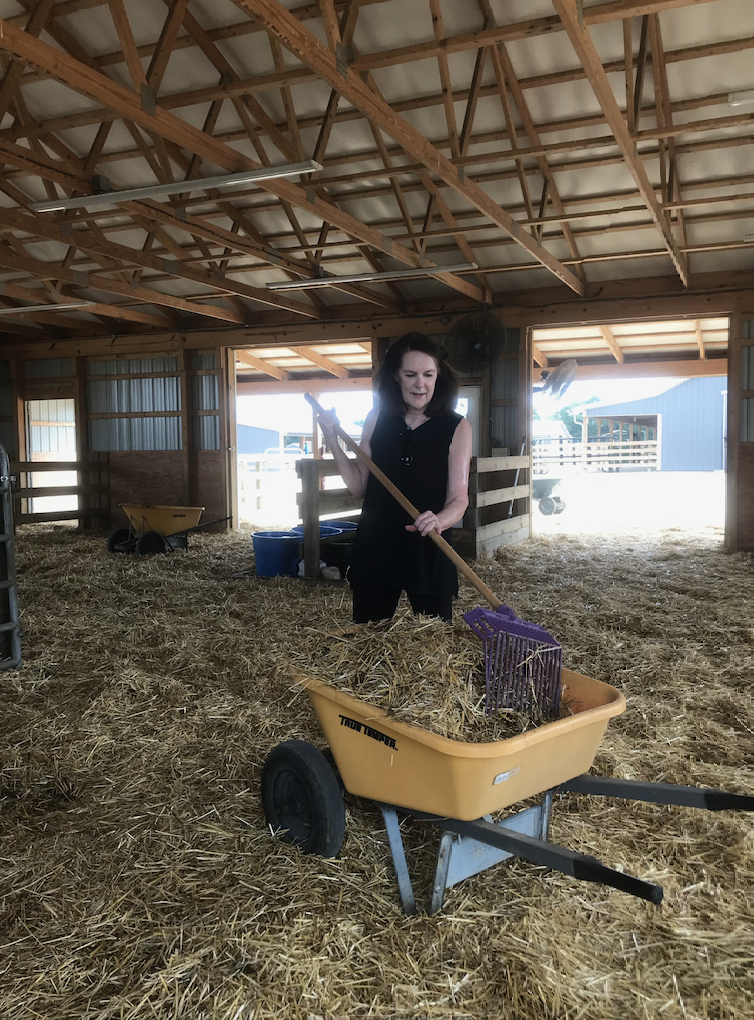When you’re first exploring the animal world with your child, your teachings almost always will start with the sounds they make. (You know, a cow goes moo and a cat goes meow.) But what about pointing out their personalities, too? Apart from the singular hee haw sound that they make, much of what you might know about donkeys is probably incorrect.
At least, that’s what award-winning singer/songwriter Sukey Molloy discovered when she read about these gentle, loving animals. And it’s that very idea that she explores in her new album, The Adventures of Little Stubby, a storytelling album whose main character is a donkey that is at once adorable and relatable — and not stubborn at all. Sukey spoke exclusively with Celebrity Parents about mindful parenting, understanding the misunderstood donkey, and why, whether it’s creating a connection with your kid or an animal, you always have to practice the three T’s: Things Take Time.
How did The Adventures of Little Stubby come to be?
I had been interested in storytelling, but I was afraid to do a storytelling album because it’s a hard sell. I stumbled upon this idea for the story and the name Stubby came up because everyone says and believes that donkeys are stubborn. As it turns out, they’re really not stubborn. I was so struck by this when I was reading about donkeys and visiting them at rescue farms.
And the reason you started visiting donkey rescue farms came out of a very personal experience.
My husband has said for years, “If someone had to say what kind of animal I am, I’d be a donkey because I’m stubborn.” It was the Thanksgiving before Covid and we were in a bookstore, and here’s this book Running with Sherman with this wonderful donkey photograph on the cover. When my husband wasn’t looking, I bought the book to give it to him for Christmas, which I did, thinking it would be a funny joke.
Two months later, he got Covid, very early on before we knew much about it. It was the most difficult time of my life because I couldn’t visit him, and he couldn’t really talk. That week, I read Running with Sherman because I couldn’t sleep at night. I was reading about this donkey, and I discovered that this whole belief that my husband had about himself, and that I had about him, wasn’t true— any more true than it was about Stubby.
 What was the process of creating the album like?
What was the process of creating the album like?
As I was writing, I realized that I wasn’t writing the stories about someone but rather from someone. In the six stories, Stubby gets into a predicament, each one reflecting a problem that I found myself in as a child. For example, being afraid of the doctor, moving to a new home — each of these stories connected to something that I had a lot of memories of growing up. I had to think how to get Stubby through each problem.
It came to me that Stubby could stop, take a few moments, take a breath, and count to three. Of course, he counts in heehaws, but the listener can count 1, 2, 3. Then he discovered after counting to 3 that he felt differently inside. Either he finds that he’s calm enough to think about what to do, or he feels that he’s found his courage and then everything changes for him. He understands that he has a mind of his own and that he can make his own decisions about things. It’s my hope that this becomes a concept that parents and children can try together — and counting in heehaws can add some humor to that.
Up until I did research for this interview, I also believed that donkeys were stubborn. That’s just what we’re taught.
In this country, we don’t have a use for donkeys the way they are used in other countries around the world. Sadly, with as many donkey rescue farms as there are in this country, thousands and thousands of these donkeys are put down. They’re sold at auction or sold to meat markets, frankly. The more I learned about it, I discovered that they’re such gentle, affectionate, and patient animals who have been beasts of burden throughout human history and still are in many countries. People are frustrated because they think that the donkeys are stubborn or they’re refusing to do something because they’re stubborn, but they always have a very good reason if they’re pausing or not moving. It takes a little time to find out what that is rather than abusing them.
What did you learn from visiting donkey rescue farms?
Donkeys have such a strong sense of who they are in themselves. It’s to their detriment that they will accept to be abused but still not agree to participate. So this experience with the first rescue farm I visited, I just rolled up my sleeves and volunteered to rake poop or fluff up the hay, do grooming and filling up the water troughs. It’s a lot of physical labor to take care of these animals properly.
So I walked into one of the barns with my wheelbarrow, rake, and shovel. I started to feel something was happening and I looked and saw that the donkeys were walking in from the field — they were coming to meet me. It still makes me cry; it was so extraordinary. Maybe 30 donkeys came, and they were so quiet. These were all the females and they walked in and made a circle around me. Jennifer, they just stood there, near me, all of them, and I became part of the clan. It was breathtaking; they were daughters and sisters, and it was so amazing. It was in complete, utter silence.
I began to reach towards them, and I could see which ones were ready to receive touch and which ones were not. And they have these gigantic ears so obviously they’re listening very carefully. They’re built to sense danger because they come from the desert where there are snakes. When a donkey stands still and won’t move, you better not move yourself. Pretty much most of the donkeys have been through a sad past. They’ve now come to a place where they can be together; they’re not lonely. They’re being beautifully treated and well fed; they’re having the best life possible.
It’s so interesting that a donkey is such a feeling creature and has had a completely opposite reputation.
My mentor, Garland O’Quinn, PhD, used to always remind me of the three T’s: Things Take Time. With donkeys, it’s how they’re treated, and it really comes down to those three T’s. It might take time with a donkey but once it’s your best friend and you treat it well, it’s a friend for life. They’re very patient and quiet inside. They’re also very affectionate; you can put your arms around a donkey’s neck and hug them. That’s why they’re used as therapy animals. They’re very different from horses, which tend to be high strung and emotional — they startle easily. Donkeys are very grounded.
And funny things happen. I might be grooming one donkey and another one will come up and lean on me like I’m a post! The mini donkeys aren’t much bigger than a Great Dane; they’re wide and stocky but they’re adorable. They all have different personalities; they’re really something. They can be quiet, except when they heehaw which you can’t believe the first few times you hear it because it’s so loud. It sounds like someone’s dying! [laughs]
Going and being around these donkeys, I learn something every time I’m with them. Even if it’s just to groom a particular donkey and the donkey doesn’t want me to do that, then what? I still want to be with the donkey, and sometimes, I sit down on the hay and just be there with them. Either I’m ignored or someone will come over and want to be with me. Then I get the brush because I’ve been given permission to do what I’ve wanted to do and now we’re doing it together through respect. And I can’t be in a hurry because if I’m in a hurry it’s not going to happen.
 Well, that’s like with kids, too.
Well, that’s like with kids, too.
Absolutely.
Much like your other work, The Adventures of Little Stubby centers on the idea of mindfulness and understanding everyone’s unique needs, whether that’s children or a donkey.
Yes. When a child isn’t ready to come into my class, and a parent says, “My daughter is shy,” or “My son or daughter is willful,” when we use these titles, the children hear these things. I learned early on that it’s best to never speak about someone in front of someone, even if they’re not listening because children, like donkeys, have really big ears. They’re like a sponge absorbing everything.
Also, I don’t wish anyone to be offended by the fact that I equate children with animals. It’s that an animal is completely innocent in the same way a child is. An animal is preverbal, and they do what they have to do for survival. Hitting or yelling or telling them what they’re doing is awful is never the right way — for a child or an animal like a donkey.
I agree about not giving your child a label because they’ll adopt it.
They’ll believe it for the rest of their lives. So if a parent says, “My child is shy,” I’ll say, “I wonder about that. Maybe the child is very sensitive and being very cautious, which is very smart. They might take a little time to try this, and we’re okay with that.” I’m trying to say that for the child to hear so that they can feel what they’re feeling. We have to develop a skill to find enough relaxation in yourself to be able to enter into the place of the child. It’s so similar to approaching a cat, dog, horse, or a donkey. I have to allow something in myself to become sensitive so that I can actually sense the atmosphere of another person. With adults it’s easier because we have this language situation, but it may also be an impediment. We’re not always aware that we’re operating with an agenda.
Or a timeline of things that need to be done, like bath time or bedtime.
The greatest difference I’ve been able to observe is that children are not involved with time.
They know nothing about time, so we’re always imposing a timeline which isn’t fair because they’ll have the rest of their lives having to do that. But this is the time that the brain is developing plus dealing with those immense feelings requires the greatest amount of support. I think it’s confusing because a child naturally wants to make the people they love happy, and so if they feel blamed or ashamed or that they’ve disappointed them, then it’s all internalized and comes out in different ways like misbehaving and it gets to be about fixing behaviors. The behavior is just a symptom of something else going on and what’s creating that symptom.
I hope more people can embrace this idea of mindfulness surrounding parenting and understanding how important it is.
For some reason, I’m my best self when I’m with children. I wouldn’t say I’m my best self at all with my peers. [laughs] I see in there an essential being in the process of growing, developing, and evolving and it’s an honor to be able to interact with a creature that is as-yet unformed. We get so wrapped up in how to make them be a certain way that it’s very different to try to discover who they are. Yes, they still have to learn to live in the world and it’s not easy. But there’s a difference in allowing the child to be seen by me rather than seeing the child from the outside with my idea of who they are.
Don’t you have the experience when you look at your children and it’s kind of shocking. You don’t really know how all this happened! They’re here in your life and you’re doing all these things. But once in a while the magic of it, the mystery of it, if we’re not frightened by it and can relax in the face of that, we don’t have to make them do anything. We don’t have to make them eat all the food on the plate. We don’t have to make them take a bath every night. It’s asking oneself, “What is really the most important here?”
I absolutely agree.
What’s interesting to me primarily is that it has to do with trust. When you’re asking a sensitive person or animal to do something that is your idea, like putting on a coat or a bridle, you have to move toward that activity with a kind of sensitivity. You have to keep in mind what you want to have happen, how it will be received in such a way that the donkey or this little child can feel it’s their idea, too, and they can come to a place of being able to participate willingly so that the motivation is coming from inside them, not thrust from the outside.
It’s truly all about connection in all forms.
It is. As humans we’re supposed to be the stewards of the earth, the whole natural world and wildlife. Animals can do nothing about what’s happening, and we have to do something. Donkeys are just one animal that we’re learning something about in The Adventures of Little Stubby, but really it’s about being kind and compassionate to all creatures.









